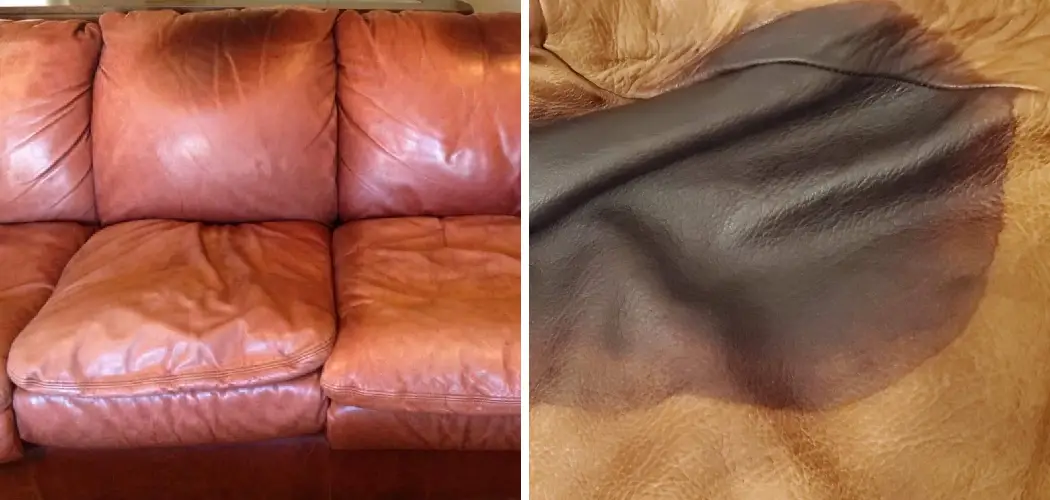Leather is a luxurious and durable material, often used in a variety of items such as furniture, car seats, and clothing. However, over time, body oils can accumulate on leather surfaces, making them look greasy and causing potential damage. Knowing how to properly clean and maintain your leather items is essential to preserving their appearance and prolonging their lifespan.
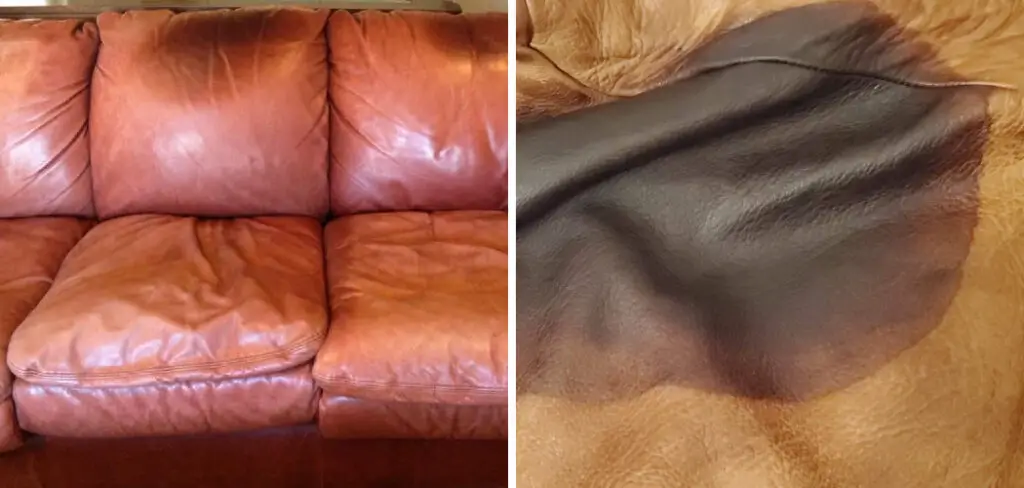
In this guide on how to remove body oil from leather, we will walk you through effective methods to remove body oil from leather, ensuring your cherished belongings remain in pristine condition.
What is Body Oil?
Body oil is a natural substance produced by our skin to keep it moisturized and protected. While body oils are beneficial for our skin, they can be harmful to leather items if not properly removed. When body oils come into contact with leather, they can leave behind a greasy residue that can damage the material over time, causing discoloration and deterioration.
It is important to note that body oils can also come from other sources, such as hair products and food spills. Therefore, it is crucial to promptly and effectively remove any oil stains from leather surfaces.
Cleaning Supplies You Will Need
Before we dive into the methods for removing body oil from leather, here are some essential cleaning supplies you will need:
Soft Microfiber Cloth or Sponge:
A soft cloth or sponge is essential for gently cleaning leather surfaces without causing any scratches or damage.
Leather Cleaner:
There are various types of leather cleaners available on the market. Make sure to choose one that is specifically designed for the type of leather you are cleaning, such as genuine leather, bonded leather, or faux leather.
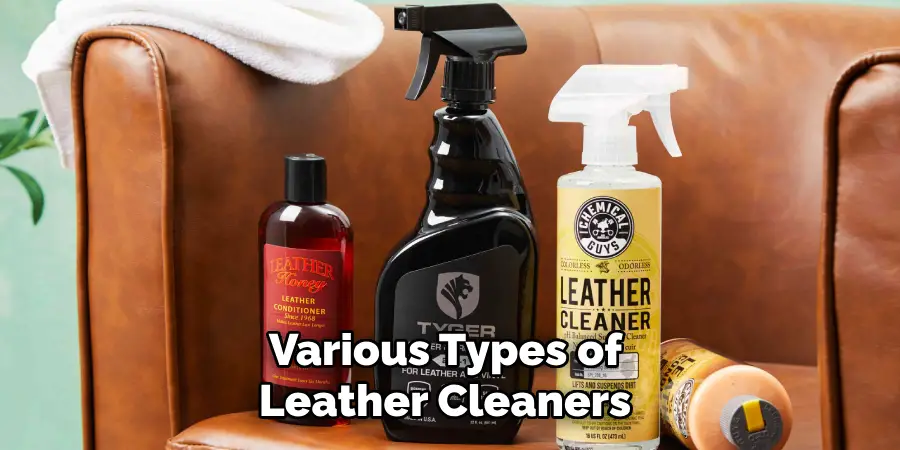
White Vinegar:
White vinegar is an effective and natural cleaner that can help break down and remove body oil from leather. It also helps deodorize any unpleasant odors that may be left behind.
Baking Soda:
Baking soda is a versatile household item known for its ability to absorb odors and lift stains. It can also be used to treat body oil stains on leather.
9 Simple Step-by-step Guidelines on How to Remove Body Oil From Leather
Step 1: Blot the Stain
Begin by gently blotting the stained area with a soft microfiber cloth or sponge. Avoid rubbing the stain, as this can spread the oil further into the leather and worsen the damage. Carefully press the cloth or sponge onto the oil stain, allowing it to absorb as much of the oil as possible.
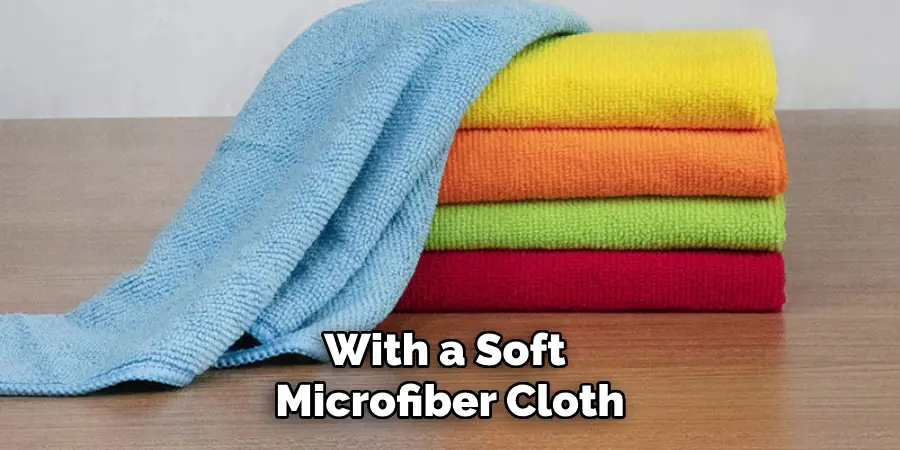
This initial step helps reduce the amount of oil present on the leather surface, making it easier to remove the remaining residue in subsequent steps.
Step 2: Sprinkle Baking Soda
After blotting the stain, sprinkle a generous amount of baking soda directly onto the affected area. Baking soda is known for its excellent oil-absorbing properties, and it will work to lift the remaining body oil from the leather surface. Ensure that the stained area is fully covered with a thick layer of baking soda for maximum effectiveness.
Allow the baking soda to sit on the stain for several hours, or ideally overnight, to give it ample time to absorb the oil.
During this period, the baking soda will draw out the oil from the leather, making it easier to remove. Once the waiting period is over, use a soft brush or cloth to gently remove the baking soda residue from the leather. If any oil remains, repeat the process as needed until the stain is fully removed.
Step 3: Create a Vinegar Solution
Next, create a vinegar solution to help break down any remaining oil on the leather. To do this, mix equal parts of white vinegar and distilled water in a small bowl or spray bottle.
It is essential to use distilled water, as tap water may contain minerals that can leave residues on the leather. Vinegar is a natural and effective cleaner that will not only help remove the oil but also deodorize the leather, removing any lingering odors.
Once the solution is prepared, lightly dampen a soft microfiber cloth or sponge with it. Avoid soaking the cloth or sponge; you only need it slightly damp to clean the leather effectively without saturating it. Gently dab the stained area with the vinegar solution, working in small circular motions. This will help to lift the oil from the leather further.
After treating the stain, use a clean, dry microfiber cloth to blot away any excess moisture and vinegar solution from the leather surface. Allow the leather to air dry completely before moving on to the next step. If necessary, repeat this step until the oil stain is no longer visible.
Step 4: Use a Leather Cleaner
Once the leather has air-dried completely from the vinegar treatment, it’s time to apply a leather cleaner.
Choose a leather cleaner that is specifically formulated for the type of leather you are dealing with—whether it be genuine leather, bonded leather, or faux leather. Follow the instructions on the product label for the best results.
To use the leather cleaner, apply a small amount to a soft microfiber cloth or sponge. Gently rub the cloth or sponge onto the stained area, working in small circular motions.
This will help to remove any remaining body oil residue and restore the leather’s natural appearance. Be sure to test the cleaner on a small, inconspicuous area of the leather first to ensure it does not cause any discoloration or damage.
Step 5: Rinse and Dry
After applying the leather cleaner, it is crucial to rinse off any remaining residue to prevent build-up or potential damage. Dampen a soft microfiber cloth with distilled water—making sure it is not overly wet—and gently wipe the area you treated with the leather cleaner.

This step ensures that any leftover cleaner is removed from the leather surface.
Once you have rinsed the area, use another clean, dry microfiber cloth to blot away excess moisture. Avoid rubbing the leather to prevent any damage. Allow the leather to air dry thoroughly in a well-ventilated area, away from direct sunlight or heat sources, which can cause the leather to dry out and crack.
Proper drying is essential to preserving the leather’s condition and preventing any potential water spots or damage.
Step 6: Apply a Leather Conditioner
After the leather has dried completely, it’s time to apply a leather conditioner. Leather conditioner helps moisturize and protect the leather from drying out and cracking over time. This step is especially crucial if you have used vinegar or other cleaners, as they can dry out the leather and cause damage if not properly conditioned afterward.
To use the conditioner, apply a small amount to a clean, soft microfiber cloth or sponge. Gently rub the conditioner onto the entire leather surface in circular motions until it is fully absorbed. Be sure to follow the instructions on the product label for best results and avoid using too much conditioner, which can leave behind a greasy residue.
Step 7: Buff the Leather
After the leather conditioner has been fully absorbed, the next step is to buff the leather to restore its natural shine and smooth texture. Take a clean, soft microfiber cloth or a specialized leather buffing cloth and gently rub the conditioned area in small circular motions.
Buffing helps to even out any excess conditioner and enhances the leather’s appearance by giving it a polished finish.
Work slowly and methodically, ensuring that you cover the entire surface evenly. Pay extra attention to any areas that might appear dull or uneven. Buffing not only improves the aesthetic appeal of the leather but also helps to seal the conditioner into the leather, extending its protective effects.
Once you have finished buffing, your leather item should look rejuvenated, with a restored natural luster and a smooth, supple feel.
Step 8: Maintain the Leather
To keep your leather items in good condition and prevent future oil stains, it is essential to regularly maintain them. This can be done by wiping down the leather with a cloth or sponge lightly dampened with distilled water.
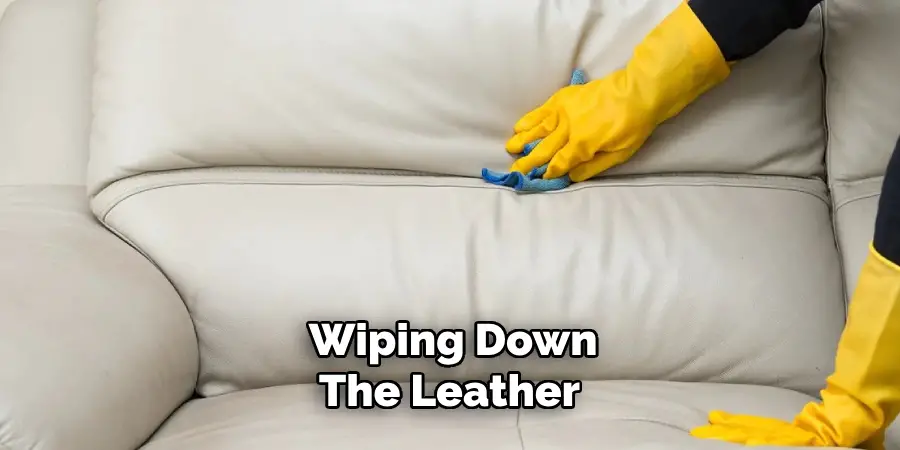
This will help to remove any dust, dirt, or oils that may have accumulated on the leather’s surface. After wiping down the leather, be sure to dry it thoroughly with a clean microfiber cloth and allow it to air dry completely before using or storing it.
Additionally, you can also use a specialized leather cleaner and conditioner every few months to keep your leather items looking their best.
Regular maintenance will help prevent any build-up of oils, dirt, or grime on the leather surface and ensure its longevity. With proper care and maintenance, your leather items can last for many years to come.
Step 9: Consider Professional Cleaning
If the oil stain on your leather item is particularly stubborn or if you are unsure about how to properly clean it, consider taking it to a professional cleaner.
They have specialized equipment and products that can safely and effectively remove stains from leather without causing any damage. This option may be more expensive, but it ensures that your leather items receive the best treatment and care possible.
Following these steps on how to remove body oil from leather can help you effectively remove oil stains from your leather items and keep them looking their best. Remember to always test products on a small, inconspicuous area first and to carefully follow the instructions on product labels for the best results.
With proper care, your leather items can continue to look beautiful and last for years to come. So go ahead and enjoy your favorite leather jacket or handbag without worrying about unsightly oil stains! Happy cleaning!
Preventive Measures
Preventing body oil stains on leather is easier than trying to remove them. Here are some effective preventive measures to help you keep your leather items in pristine condition:
Use Leather Protectants:
Invest in a high-quality leather protectant spray. These products create a barrier between the leather surface and potential stains. Apply the protectant according to the manufacturer’s instructions before using your leather items.
Wear Protective Clothing:
When using leather furniture or car seats, consider using covers or throws. This additional layer can protect the leather from body oil, sweat, and dirt, especially in hot weather.
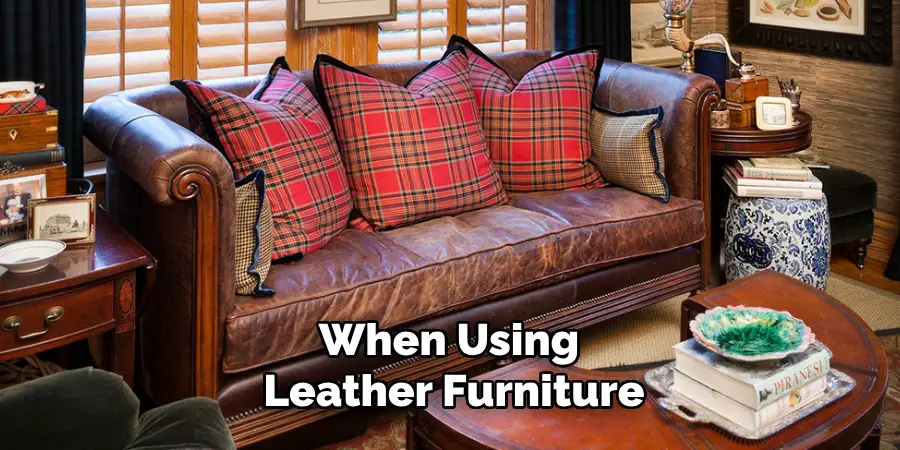
Regular Cleaning:
Make it a habit to clean your leather items regularly. Wipe them down with a slightly damp microfiber cloth to remove any surface dirt and oils. Frequent light cleaning can prevent the build-up of substances that cause stains.
Condition Regularly:
Aside from cleaning, conditioning your leather items every few months keeps the leather moisturized and less porous, making it more resistant to oil absorption. Use a good-quality leather conditioner, following the instructions carefully.
Be Mindful of Skin Contact:
Try to minimize direct skin contact with leather items, especially if your skin has applied products like lotions, sunscreens, or oils. These substances can transfer to the leather and cause stains.
Avoid Eating on Leather:
Food and beverages can spill and leave stains on leather surfaces. To prevent this, avoid eating and drinking on or near leather furniture and accessories.
By integrating these preventive measures into the care routine for your leather items, you can extend their lifespan and maintain their luxurious appearance. Regular upkeep and mindful usage are key to avoiding oil stains and ensuring your leather goods stay beautiful for years to come.
Additional Tips
Test Products First:
Before applying any cleaning or conditioning products to your leather item, always test them on a small, inconspicuous area first. This will help ensure that the product does not cause discoloration or damage to the leather.
Use Gentle Tools:
When cleaning leather, always use soft, gentle tools such as soft-bristled brushes, microfiber cloths, or sponges. Avoid using abrasive scrubbers or harsh chemicals that can cause damage to the leather’s surface.
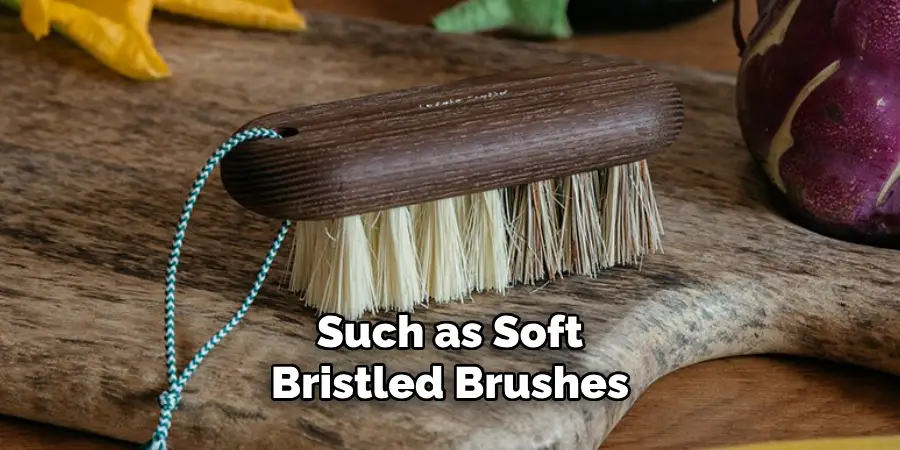
Avoid Direct Sunlight and Heat:
Leather is a natural material that is prone to drying out and cracking when exposed to direct sunlight and heat sources. When treating leather, always work in a well-ventilated area away from these elements.
Regular Maintenance:
To keep your leather items looking their best, it is essential to regularly clean and condition them. Follow the steps outlined above at least once every 2-3 months for optimal maintenance.
Store Properly:
When not in use, store your leather items in a cool, dry place away from direct sunlight or heat sources. Avoid storing leather items in plastic bags or other non-breathable materials, as this can cause the leather to dry out and crack.
Professional Cleaning:
If unsure about how to properly clean your leather item or if the stain is particularly stubborn, consider taking it to a professional cleaner for specialized treatment and care. This may be more expensive, but it ensures that your leather items are treated with the utmost care and expertise.
With these steps and additional tips, you can effectively remove oil stains from your leather items and keep them looking beautiful for years to come.
Frequently Asked Questions
Q: Can I Use Household Cleaners or Vinegar to Remove Oil Stains From Leather?
A: While some may recommend using these items, they are not recommended as they can dry out the leather and cause damage in the long run. It is best to use specialized leather cleaners and conditioners that are designed specifically for leather.
Q: How Can I Remove Oil Stains From Suede?
A: Suede is a delicate type of leather, and it is best to take it to a professional cleaner for stain removal. If you prefer to clean it yourself, try using cornstarch or talcum powder on the stain, letting it sit overnight, and then brushing it off gently in the morning. Repeat as needed until the oil residue has been fully absorbed before treating with a suede brush.
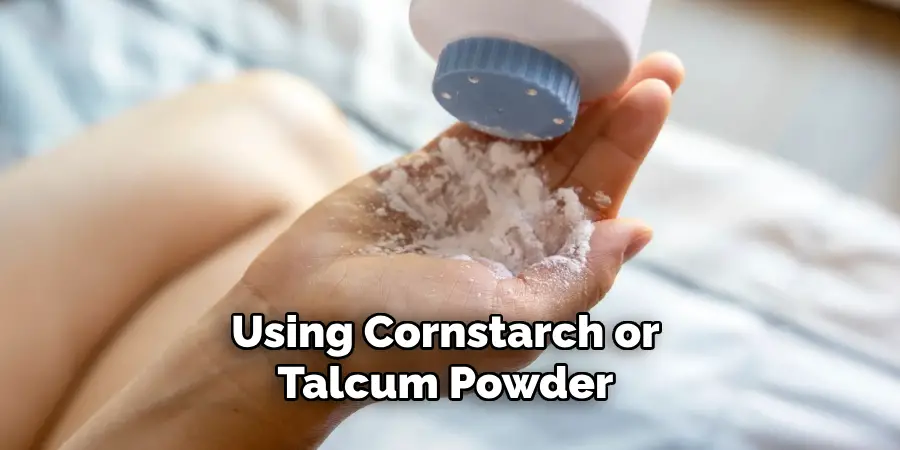
Q: Will Removing Oil Stains from Leather Cause Discoloration?
A: As with any cleaning product or method, always test first on a small area of the leather to ensure that it does not cause discoloration. If the leather is particularly sensitive, consider taking it to a professional cleaner for treatment.
Q: How Often Should I Clean and Condition My Leather Items?
A: It is recommended to clean and condition leather items at least once every 2-3 months to maintain their quality and appearance. However, if the items are heavily used or exposed to oils and dirt frequently, it may be necessary to clean them more often. Regular maintenance is key to keeping leather items in good condition.
Q: Can I Use Olive Oil or Other Oils as a Leather Conditioner?
A: While some may recommend using these oils, they are not recommended as they can cause the leather to become too oily and attract more dirt and stains. It is best to use specialized leather conditioners that are designed specifically for this purpose.
You can also consult with a professional cleaner for recommendations on the best products to use for your specific leather items. So go ahead and enjoy your beautiful, clean leather without worrying about pesky oil stains! Happy cleaning!
Conclusion
Leather is a durable and luxurious material, but it requires proper care to maintain its quality over time. When dealing with oily stains on leather, it is essential to act quickly and use suitable cleaning methods that will not damage the material. With the steps outlined above, anyone can effectively remove body oil stains from leather and restore its natural beauty.
Remember to always test any cleaners or conditioners on an inconspicuous area first, and never soak the leather as excessive moisture can cause damage.
By following these steps on how to remove body oil from leather, you can keep your leather items looking their best for years to come. So next time you spill some oily food on your favorite leather jacket or shoe, don’t panic – just follow these steps, and your leather will be as good as new in no time! Happy cleaning!

